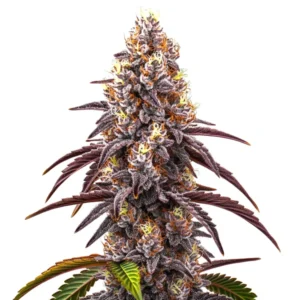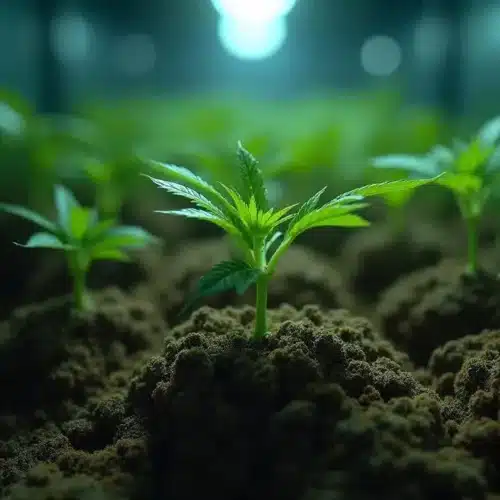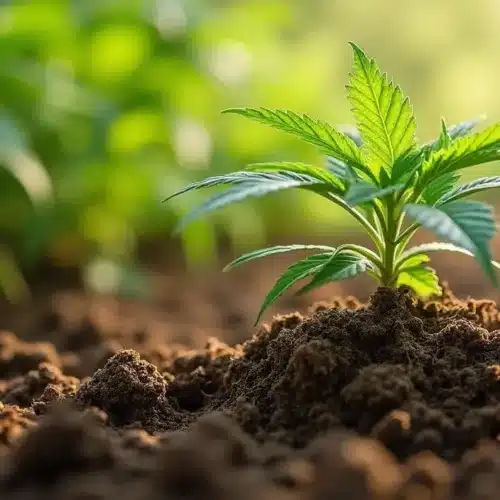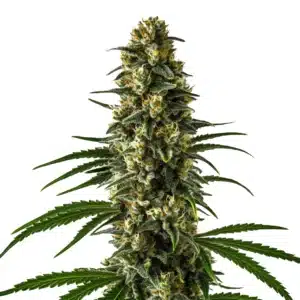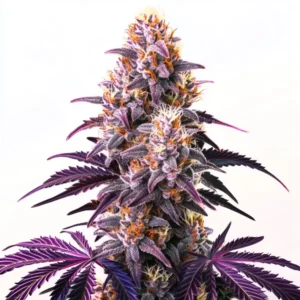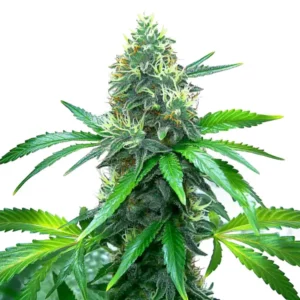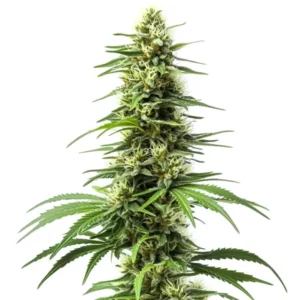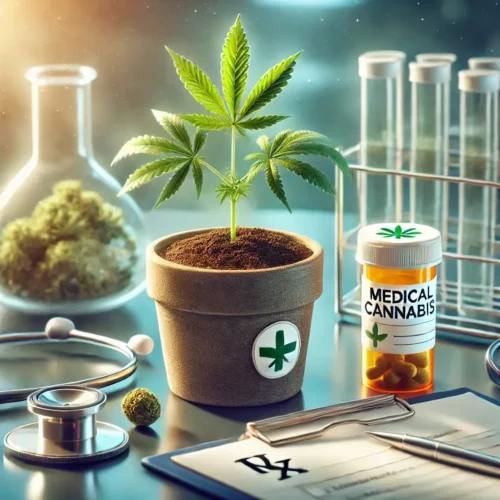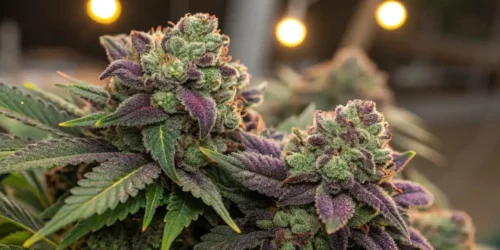Growing your own medical cannabis brings both joy and empowerment. Understanding the various cannabinoids is an important part of selecting the right strains for your needs. Whether you are just starting or have some experience, learning about the different aspects of cannabis will enhance your growing journey. It’s more than just a hobby—it’s about gaining control over your health and well-being.
What Are Cannabinoids?
Cannabinoids are fascinating natural compounds found in cannabis plants. They interact with the body’s endocannabinoid system, which plays a crucial role in regulating various physiological processes, such as pain, mood, and sleep. Currently, researchers have identified more than 100 cannabinoids, each having its own unique effects and potential benefits. While THC and CBD are the most recognized, there are numerous other cannabinoids worth exploring.
The diversity of cannabinoids not only adds complexity to cannabis plants but also highlights the importance of strain selection. Choosing the right strains means that you can target specific needs and issues. For example, certain cannabinoids might provide potent pain relief, while others excel in reducing anxiety or improving sleep. This nuance can be crucial when selecting which strains to grow at home, empowering you to make informed decisions.
Major Cannabinoids and Their Benefits
Here are some key cannabinoids you should know about:
- THC (Tetrahydrocannabinol): Known for its psychoactive properties, THC provides relief from chronic pain and stimulates appetite. It’s the compound that most people are familiar with when they think of cannabis use.
- CBD (Cannabidiol): Unlike THC, CBD is non-psychoactive and has gained immense popularity for its calming effects. It’s often used for anxiety, seizure disorders, and various forms of pain management.
- CBG (Cannabigerol): This particular cannabinoid is often found in smaller quantities, but it’s gaining attention for its potential anti-inflammatory and neuroprotective properties. With ongoing research, its benefits are becoming clearer.
These examples illustrate how various cannabinoids contribute to the overall effects of different strains. Choosing specific strains based on their cannabinoid profile allows growers to tailor their plants to meet personal health needs. For instance, if you’re looking for stress relief, you might lean toward high CBD strains, while those seeking more psychoactive effects may opt for higher THC varieties.
Promos & Deals
Selecting Medical Cannabis Strains
Identifying which strains to grow involves understanding their characteristics, growing requirements, and potential benefits. Some strains are better suited for medical use, providing specific advantages based on their cannabinoid content. Here are three popular strains that are ideal for home growers:
- Godfather OG: Known as one of the strongest strains available, Godfather OG features balanced effects and a unique flavor profile, making it suitable for both beginners and experienced users looking for relaxation.
- Blue Dream: This strain stands out for its high THC content and offers a calming yet uplifting experience. Many find it ideal for those seeking relief from stress, anxiety, or pain.
- Girl Scout Cookies: Renowned for its potent blend of THC and CBD, this strain is famous for pain relief and mood enhancement, making it a go-to for medical users.
When choosing strains, consider your growing environment and personal preferences. Some strains thrive indoors, while others prefer outdoor settings. For instance, if you have limited indoor space, opting for smaller, bushy strains may maximize your yield. Researching each strain’s specific growing requirements will set you up for success, allowing you to enjoy the full benefits of cannabis cultivation.
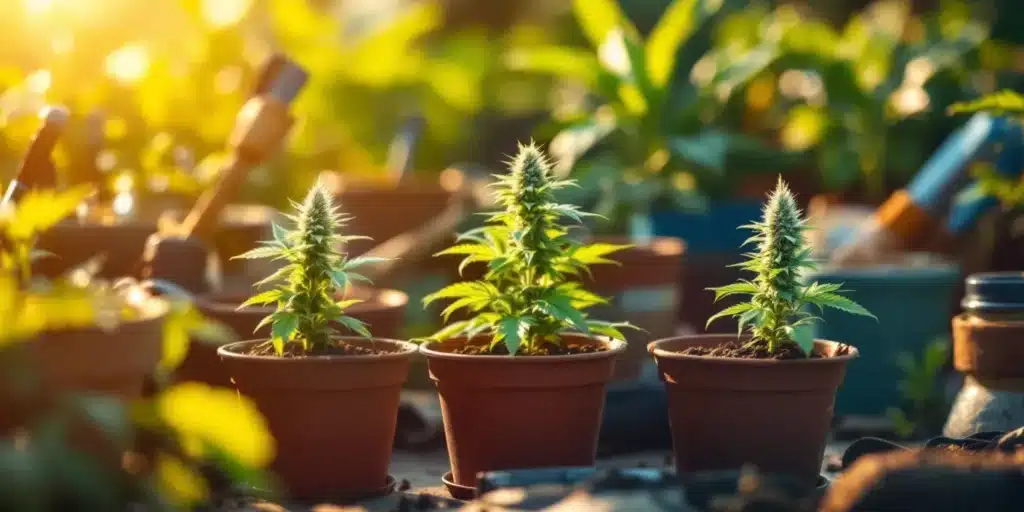
Factors to Consider When Growing Cannabis
Before you start cultivating cannabis, several factors should influence your decision:
- Climate: Understanding your local climate will help determine whether you should grow indoors or outdoors. Indoor growing allows for controlled conditions year-round, while outdoor cultivation benefits from abundant natural sunlight.
- Space: Assessing how much space you have available is essential. Certain strains can grow quite large, so ensure you have enough room to accommodate your plants. Vertical growing techniques can maximize limited space.
- Lighting: The type of lighting used can significantly impact growth. High-quality grow lights can enhance yield and overall plant health. Familiarizing yourself with available lighting options can save you time and money.
Taking these factors into account will help ensure that your plants receive optimal care and can thrive in a suitable environment. Remember, a successful growing environment is foundational to realizing the full potential of your cannabis plants.
The Growing Process
Growing cannabis requires patience, knowledge, and a little trial and error. Essential steps in the process include selecting the right medium, watering appropriately, and ensuring proper nutrients. As with any gardening endeavor, experience will teach you what works best for you and your unique setup.
The first part of the growing process often begins with selecting seeds or clones. Quality seeds from a reputable supplier can make a difference in your overall success. Look for seeds known for their stability and yield potential. You might also consider the option of cloning from a healthy mother plant to maintain genetic consistency, which can result in more uniform growth and yields.
Seed Germination and Planting
Once you have selected your seeds, the next step is germination. This process typically takes about 24 to 72 hours, depending on the method used. Follow these steps for successful germination:
- Place seeds in a damp paper towel and keep them warm and dark until they sprout. A common method is to place them in a container on top of a warm appliance.
- Once the seeds sprout, carefully transplant them into small pots filled with nutrient-rich soil, ensuring the root is pointed downward.
- Provide adequate light and moisture as the seedlings establish their roots. Continue to monitor temperature and humidity to create an optimal environment.
Successful germination leads to the planting stage, where young seedlings thrive. Make sure to monitor their growth closely, as seedlings require specific care to flourish. Seedlings typically need a bit more attention than mature plants, so ensure they receive adequate light and are not overwatered.
Nutrient Management
Nourishing your cannabis plants appropriately is essential for achieving optimal growth and maximizing your harvest. Cannabis plants require different nutrients at various growth stages, and understanding these needs can help you tailor your approach effectively. The primary nutrients required are nitrogen, phosphorus, and potassium, commonly referred to as NPK.
During the vegetative stage, cannabis plants need higher levels of nitrogen to promote leafy growth and overall vigor. Conversely, as the plants transition to the flowering stage, reducing nitrogen levels and increasing phosphorus and potassium becomes crucial for flower development. Paying attention to nutrient schedules can significantly influence the outcome of your growing experience.
Organic vs. Synthetic Nutrients
Growers can choose between organic and synthetic nutrients based on their preferences and goals. Organic nutrients come from natural sources and promote healthier soil ecosystems, benefiting the plants in the long run. They can create a more robust root system and improve the overall health of the plants through microbial interactions.
- Organic Nutrients: Examples include compost, worm castings, and fish emulsion. They often provide slow-release nutrients, enhancing the soil’s biology over time.
- Synthetic Nutrients: These often come in concentrated forms and can deliver nutrients quickly. However, careful monitoring is required to avoid nutrient lockout or plant burn.
Ultimately, the choice between organic and synthetic nutrients depends on personal preference, environmental considerations, and growing objectives. Regardless of the choice made, regular monitoring of nutrient levels is necessary for healthy plants. Remember, over-application can sometimes do more harm than good, so maintaining a balanced approach is essential.
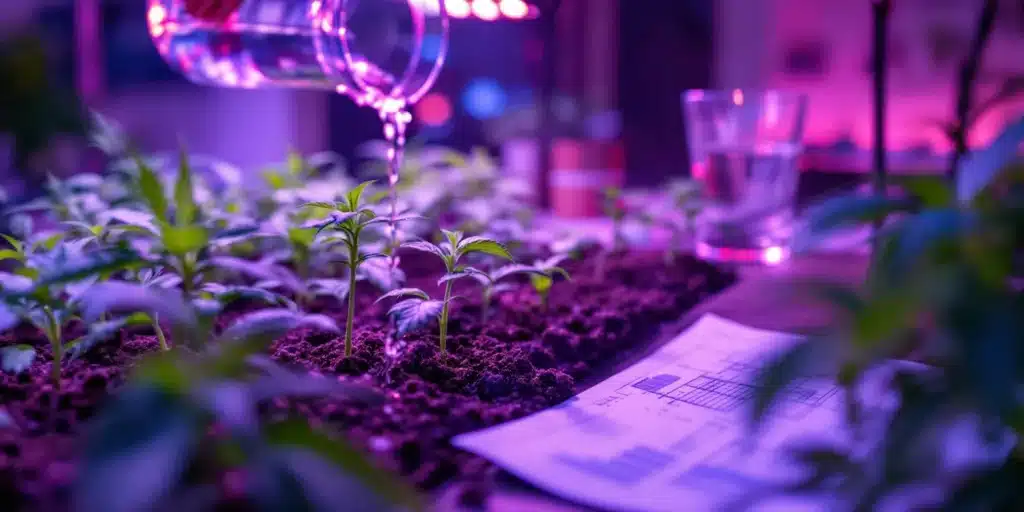
The Importance of Light
Light is one of the most critical elements in the cannabis growing process. It fuels photosynthesis, allowing plants to grow and produce cannabinoids effectively. Understanding light cycles is essential for indoor growers, especially when transitioning plants from vegetative to flowering stages. The quality and intensity of light can make a notable difference in both the growth rate and the health of your plants.
Indoor growers often use various types of light sources, including LED, fluorescent, and high-intensity discharge (HID) lights. Each type has advantages and disadvantages depending on your setup and the needs of your plants. LEDs, for instance, are energy-efficient and generate less heat, making them an excellent choice for small indoor spaces.
Light Schedules for Optimal Growth
Plants require different light periods based on their growth stage to thrive:
- Vegetative Stage: Maintain a light schedule of 18 hours of light and 6 hours of darkness. This encourages plant growth and develops a strong structure.
- Flowering Stage: Shift to a 12/12 light cycle to encourage flowering. This reduction in light mimics natural seasonal changes, signaling the plants to prepare for flower production.
Observing how plants respond to light conditions can guide your adjustments, ensuring healthy and robust growth throughout the entire process. Documenting your plants’ growth and responses can provide valuable insights for future cultivation efforts.
Caring for Your Cannabis Plants
Continuing care is vital for healthy cannabis plants. Proper watering, pest management, and pruning techniques can significantly impact overall health and yield. Each plant is unique, and their care routines may differ, so be observant and responsive to your plants’ needs.
Watering should be done carefully. Overwatering and underwatering are both detrimental to plant health. The key is to allow the top inch of soil to dry out between watering to ensure that roots stay healthy and oxygen-rich. Additionally, consider incorporating a good drainage solution to prevent standing water in your pots.
Addressing Common Issues
As a grower, you may encounter several challenges. Here are some methods to address common issues:
- Pest Management: Regularly inspect plants for signs of pests and diseases. Using natural pest control options like neem oil can help mitigate infestations without harming beneficial insects.
- Pruning: Regularly removing weak or damaged leaves promotes better airflow and light penetration. This helps improve overall plant health and encourages new growth.
Staying vigilant and responsive to plant needs will go a long way toward a successful harvest. Connecting with the growing community through forums or local clubs can also provide support and resources for tackling any challenges you might face.
Harvesting and Curing Your Crop
Once your plants reach maturity, harvesting becomes the final step. It’s essential to choose the right time for harvesting to achieve the desired cannabinoid levels and overall quality. Look for mature trichomes, which appear cloudy or amber, indicating optimal potency. Waiting for the perfect moment can significantly enhance the flavor and effect of your final product.
After harvesting, proper curing is critical to the process. This method allows the flavors to develop and enhances the overall quality of your cannabis. The curing process helps to refine and mellow out harsh tastes, leading to a smoother smoking or vaping experience. Follow these steps for effective curing:
- Hang the branches upside down in a dark, cool place to dry. Proper airflow is vital during this step to prevent mold.
- Once dry, trim the buds and place them in glass jars, opening them periodically to release excess moisture and allow for airflow. This is known as “”burping”” the jars.
- Continue curing for several weeks for optimal taste and potency. The longer you cure, the better the flavors will be.
Proper curing not only improves flavor but also enhances the potency of the final product. This attention to detail can pay dividends in terms of both the efficacy and enjoyment of your medical cannabis.
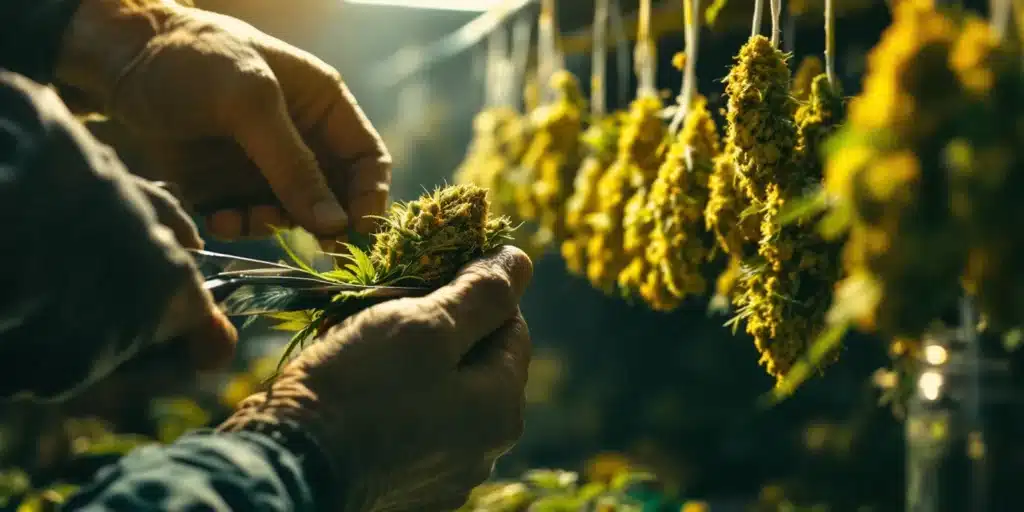
FAQs
What is the best strain to grow indoors for medical use?
Strains like Blue Dream or Girl Scout Cookies are excellent choices for indoor cultivation. Both strains provide beneficial effects for various ailments and are well-suited for home growing environments. Always consider the unique growth characteristics of each strain to align with your growing setup.
How often should I water my cannabis plants?
Watering frequency depends on soil type, pot size, and stage of growth. Generally, allow the top inch of the soil to dry out between watering to prevent root rot. It’s helpful to check moisture levels regularly and adjust your schedule based on your plants’ needs.
What lighting is best for growing cannabis indoors?
LED lights are often preferred due to their energy efficiency and lower heat output. However, HID lights can also produce excellent results. Consider your budget and setup when choosing the right lighting, keeping in mind the growing stage of your plants.
How can I tell when my cannabis plants are ready to harvest?
Examine the trichomes with a magnifying glass. When they appear cloudy or amber in color, it’s time to harvest. This indicates the optimal potency and effect of the strain, enhancing the overall experience.
Is it legal to grow cannabis at home?
The legality of home cannabis cultivation varies by region. Always research local laws to ensure compliance before starting your growing operation. This helps protect you and ensures that you’re growing responsibly and legally.



